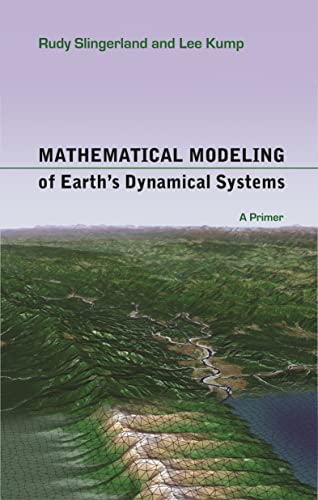Mathematical Modeling of Earth's Dynamical Systems: A Primer
Mathematical Modeling of Earth's Dynamical Systems: A Primer is backordered and will ship as soon as it is back in stock.
Couldn't load pickup availability
Genuine Products Guarantee
Genuine Products Guarantee
We guarantee 100% genuine products, and if proven otherwise, we will compensate you with 10 times the product's cost.
Delivery and Shipping
Delivery and Shipping
Products are generally ready for dispatch within 1 day and typically reach you in 3 to 5 days.
Book Details
-
Author: Lee Kump
-
Publisher: Princeton University Press
-
Binding: Paperback
-
Number of Pages: 248
-
Release Date: 01-12-2011
-
ISBN: 9780691145143
-
Package Dimensions: 8.0 x 5.0 x 0.7 inches
-
Language: English
About The Book
Mathematical Modeling of Earth's Dynamical Systems by Lee Kump, published by Princeton University Press in December 2011, provides earth scientists with the necessary tools to translate physical and chemical systems into mathematical models. This book is essential for those who wish to understand how Earth processes can be modeled mathematically, offering a detailed step-by-step approach for formulating dynamic models that enhance our insight into the planet’s behavior.
Targeted at upper-level undergraduates, graduate students, researchers, and professionals, this text focuses on the important geological variables that control physical-chemical geoscience problems. It explains how to identify key factors and assumptions, guiding readers through the process of abstracting complex systems into dynamic equations. The book stresses the importance of proper model testing and highlights common pitfalls, such as inadequate transport laws or unfalsifiable models.
Featuring various examples, such as the evolution of sandy coastlines and the global carbon cycle, the book provides ample illustrations and case studies. Students will be equipped with the mathematical and conceptual tools necessary for solving geologic problems through a quantitative framework. Familiarity with physics, chemistry, and geology, along with knowledge of calculus, is recommended for those using this textbook.
A supplementary Instructor's Manual is available for professors who wish to incorporate the text into their courses, making it an ideal resource for both students and educators in the field of earth sciences.





